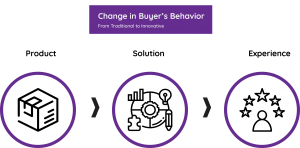The landscape of B2B sales has been changing increasingly during the past decade. Old-school calling/emailing techniques are making space for a data-driven business world. The rise of sales intelligence tools has given many Fortune-500 companies a competitive edge across industries. While companies are taking the time to research before they pick a new SaaS solution, sales reps are going hardcore on prospecting in the hope to get clients. However, some forms of lead generation are becoming annoying due to an overload of auto-generated emails and messages through various channels. How can you – as a sales professional – take advantage of data-driven sales intelligence tools?
It Costs Time
The rise of sales intelligence tools has given both Fortune-500 companies and SMEs – if properly implemented – an advantage across industries. With the arrival of sales tools, at affordable prices (e.g. sales nav is $80/month), any business has the world at their fingertips. Besides pricing, personalization is important as B2B customer expectations call for tailored products. Many companies tweak their strategy to buyers’ changing behaviors, usually requiring an investment in a tool.

In fact, according to a Deloitte Digital report, 75% of surveyed buyers seek input from peers and spend a more significant time researching solutions. The time and thus cost spent on research could be consuming. More often, customers are deviating from product and solution-focused services to comprehensive value-driven experiences. In fact, Moreover, there’s much at stake for decision-makers. They are overwhelmed with data, and their decisions impact many stakeholders.
The Challenges
There are numerous sales intelligence tools in the market for the purpose of lead generation, market reports and firmographics. Usually, thousands to ten thousands of dollars later, sales reps and executives discover that they still need to dig through insights generated by these tools. This data is overwhelming and takes time to sift through to get to the competitive information to ‘buy the buyer.’ So much data, but no actionable or visible insights they can immediately separate from the piles of digital dossiers. The gap is glaring: who to talk to and what is there to talk about that will have prospects glued to your pitch? These questions are essential but nevertheless lacking answers in many tools. Users still have to go through a multitude of data points to get to what they are looking for.

In a changing scene of B2B sales providing just a product or solution does not meet the buyer’s expectations anymore. In fact, Deloitte’s report suggests that it shifted from service to providing an experience. This includes personalization, speed, and an outcome-focused mechanism. The buyer’s decision-making process is heavily influenced by their experience. In addition, B2B Sales organizations are slow to respond to change in buyer’s needs. While buyer expectations are changing at the speed of light, sales tactics, on the other hand, have much ground to make up.
Narrowing the gap
The goal is to close the gap between the data readily available in sales intelligence tools and what prospect insights to utilize. The rise of automating sales-related tasks such as pricing and quotation, order management, and post-sales activities are still very essential in today’s B2B world. Sales automation holds the potential to benefit businesses immensely. For example, it can reduce sales costs while spending less time on outreach and more on maximizing revenue. While sales automation has changed the game, there is an emerging need for organized reporting of prospect insights. Enki AI provides a full scan of your inquiry based on the company name, keywords, and industry. It not only presents the pain points a potential customer is facing but also the opportunities to sell your product or service.
Conclusion
It’s hard to deny the change in B2B customer’s needs. But then companies have to look at what they’re doing to meet their expectations. Buyers can really walk away if an experience of a sales intelligence tool isn’t up to standard. The thing is, it’s not a market or conference fair because it’s difficult to chase them digitally once their mind is made up. The edge in sales intelligence is to deliver an experience that will take the pain of plowing through muds of data. Business professionals need something that saves them time including tailored and understandable reporting. Adopting this strategy will provide opportunities for customers to understand and to apply their data correctly.
To see what EnkiAI can offer you, read more about us or contact one of our professionals.

